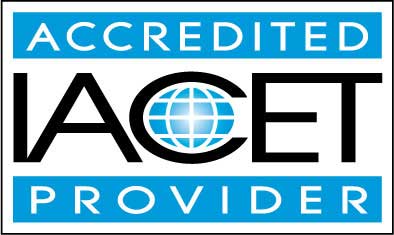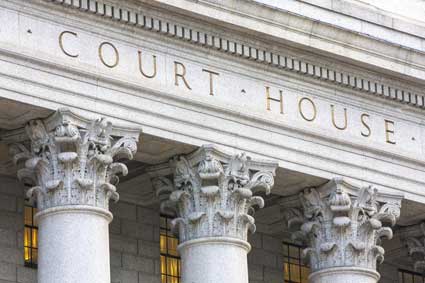Course Description
The Anatomy of American Justice: Navigating the Criminal Justice System
Justice, order, and punishment: three pillars upon which every society relies to ensure its safety, fairness, and prosperity. In the United States, our justice system strives to embody these principles. However, its vastness, complexities, and constant evolution often make it a challenging landscape to understand. Our course demystifies the American Criminal Justice System, delving deep into its mechanisms, ideologies, challenges, and triumphs.
Recent studies from the Bureau of Justice Statistics reveal that nearly 2.3 million people were incarcerated in U.S. prisons and jails in 2020. With such staggering numbers, understanding the intricacies of the justice system becomes pivotal, not just for those considering a career in criminal law, business law, or behavioral sciences, but for every citizen.
Course Introduction: The Living Organism of Justice
The American criminal justice system can be likened to a colossal living organism. Like any organism, it has a defined purpose and numerous independently functioning parts that operate harmoniously for the greater good. It's dynamic, with the ability to adapt, grow, and even falter under certain circumstances.
To understand this system, imagine not being able to point to a single entity and identifying it as the "criminal justice system." Instead, it's more abstract—a vast network of interconnected agencies, professionals, laws, and processes that together maintain societal order. Think of it as the roots of a tree spreading out, intertwined and vast, each root representing a distinct aspect of the system.
Decoding its Purpose
At its core, the primary objective of the criminal justice system is the maintenance of order. This is achieved through a multi-faceted approach:
- The Constitution: It serves as the backbone, outlining the rights and protections of citizens.
- Lawmakers: Their role is to legislate, ensuring that laws are current, just, and cater to the changing dynamics of society.
- The Police: On the ground, they employ various strategies, from community policing to investigative techniques, to ensure law enforcement.
- The Courts: They serve as arbiters of justice, determining guilt and deciding on suitable penalties.
Yet, achieving a utopia where the criminal justice system is no longer required remains elusive. Shows like "Star Trek" envision a future free from crime, but is that a realistic goal? We delve deeper into this discussion in our sessions.
Intended Outcomes
While the overarching aim is order, the system's true success lies in fostering a society where citizens lead content, peaceful lives, respecting boundaries while enjoying personal freedoms. Achieving this delicate balance is a herculean task, given the adage, "You can't please everyone."
Course Structure
-
Lesson 1: The Criminal Justice System
Dive into the intricacies and broad spectrum of the system, understanding its constituents and operations.
-
Lesson 2: The Criminal and the Crime
Explore the psyche of a criminal, the underlying factors of criminal activities, and the sociological perspectives of crime.
-
Lesson 3: The Police (Part 1. To Serve and Protect)
Delve into the noble duty of the police, their dedication, training, and challenges faced in their commitment to serve.
-
Lesson 4: The Police (Part 2. Their Powers, Procedures, and Problems)
A closer look at the authoritative powers vested in the police, the procedures they follow, and the inherent challenges and criticisms they navigate.
-
Lesson 5: The Courts (Part 1. The Players)
Understand the courtroom dynamics, roles of various players like the judge, jury, prosecutor, and defense attorney, and their concerted efforts in delivering justice.
-
Lesson 6: The Courts. (Part 2. Justice is Served)
Witness the culmination of legal processes, trials, judgments, and their aftermath, ensuring that justice is not just served, but seen to be served.
Pop Culture & Justice
Throughout this course, references from movies, books, and TV shows will illuminate real-world parallels, offering insights and challenging misconceptions. From understanding the rights presented in the iconic "Miranda statement" to discerning fact from fiction in courtroom dramas, we'll unravel how media shapes our perception.
An Impartial Journey
This course refrains from taking a political or biased stance. Our journey is dedicated to understanding the system, warts and all, ensuring an unbiased, comprehensive view. Whether you're considering a career in the realm of law, seeking personal enlightenment, or desiring to be an informed citizen, this course promises a deep, enriching dive into the heart of American justice. Join us, as we navigate the labyrinth of the U.S. criminal justice system, demystifying its operations, understanding its players, and appreciating its continual pursuit of justice.
- Completely Online
- Self-Paced
- Printable Lessons
- Full HD Video

- 6 Months to Complete
- 24/7 Availability
- Start Anytime
- PC & Mac Compatible
- Android & iOS Friendly
- Accredited CEUs

Learning Outcomes
- Summarize the criminal justice system.
- Summarize the role of police in society.
- Summarize the power, procedures, and problems of police in society.
- Describe the court systems and court procedures in society.
- Demonstrate mastery of lesson content at levels of 70% or higher.
Assessment Guide
| Assessment | Points |
|---|---|
| Introductions | 1 points |
| Assignment 1: Do we need a criminal system? | 2 points |
| Laws | 20 points |
| Lesson 1- The Criminal Justice System | 15 points |
| Assignment 2: Does Crime really pay? | 10 points |
| White Collar Crime | 20 points |
| Lesson 2- The Criminal and the Crime | 60 points |
| Assignment 3: Is there an alternative to forcing good behavior? | 2 points |
| The First Police Department in America | 20 points |
| Lesson 3- The Police (part 1) | 35 points |
| Assignment 4: Why Do Some Police Break the Law? | 2 points |
| Bootleggers and the Police | 20 points |
| Lesson 4- The Police (part 2) | 20 points |
| Assignment 5: Do you think our justice system is too complex? | 2 points |
| The American Justice System | 20 points |
| The Supreme Court | 20 points |
| Lesson 5- The Courts (part 1) | 15 points |
| Assignment 6: Retributive or Rehabilitative? | 2 points |
| Final Assignment | 2 points |
| Is the Death Penalty effective in deterring crime? | 20 points |
| Final Exam | 155 points |
| Lesson 6- The Courts (Part 2) | 45 points |



















